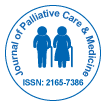Nuestro grupo organiza más de 3000 Series de conferencias Eventos cada año en EE. UU., Europa y América. Asia con el apoyo de 1.000 sociedades científicas más y publica más de 700 Acceso abierto Revistas que contienen más de 50.000 personalidades eminentes, científicos de renombre como miembros del consejo editorial.
Revistas de acceso abierto que ganan más lectores y citas
700 revistas y 15 000 000 de lectores Cada revista obtiene más de 25 000 lectores
Indexado en
- Índice Copérnico
- Google Académico
- Abrir puerta J
- Revista GenámicaBuscar
- Infraestructura Nacional del Conocimiento de China (CNKI)
- Biblioteca de revistas electrónicas
- Búsqueda de referencia
- Universidad Hamdard
- EBSCO AZ
- OCLC-WorldCat
- Biblioteca Virtual de Biología (vifabio)
- publones
- Fundación de Ginebra para la educación y la investigación médicas
- Pub Europeo
- ICMJE
Enlaces útiles
Revistas de acceso abierto
Comparte esta página
Abstracto
Autopsy Rates in the Department of Veterans Affairs Comparisons by Treating Specialty and Venue
Gary Hsin, Periyakoil VJ and James Hallenbeck
Background: Institutional autopsy rates have fallen in recent years. Significant variability in autopsy rates by venue of care has been described.
Objectives: To compare institutional autopsy rates by treatment specialty and venue in the Department of Veterans Affairs and to the community. To explore the role of palliative care in autopsy inquiries.
Research Design: Compare national autopsy rates by acute care and nursing home treating specialties for two fiscal years.
Subjects: Decedents as recorded anonymously in a national VA database, classified by terminal venue of care, treating specialty, and autopsy status.
Measures: Chi-squared, Odds ratios for data using nominal scales, linear regression for interval scale data.
Results: 40,481 deaths in fiscal years 2006-2007 were examined. As compared to those dying in general medicine (autopsy rate [A.R]: 7.6%), decedents elsewhere were significantly more likely to undergo autopsies on surgical intensive care (A.R: 14.7%), surgical ward (A.R: 15.7%), or medical intensive care (A.R: 10.6%) treating specialties (Odds ratio [O.R]: 2.10, 2.27, 1.45, respectively, p.0.000) and less likely to undergo autopsy in nursing home (A.R: 5.7%) or inpatient hospice (A.R: 3.7%) treating specialties (O.R: 0.74, 0.47 respectively). VA acute hospital autopsy rates have declined 29% over the past 10 years.
Conclusions: VA autopsy rates show significant variation across venues and specialties, but are still generally higher than in the private sector, although still low against historic norms. Significant changes in education and processes regarding autopsy inquiry must take place.
Revistas por tema
- Agricultura y acuicultura
- Alimentación y Nutrición
- Bioinformática y biología de sistemas
- Bioquímica
- Ciencia de los Materiales
- Ciencia general
- Ciencias Ambientales
- Ciencias Clínicas
- Ciencias farmacéuticas
- Ciencias Médicas
- Ciencias Sociales y Políticas
- Ciencias Veterinarias
- Enfermería y atención sanitaria
- Física
- Genética y biología molecular
- Geología y Ciencias de la Tierra
- Ingeniería
- Inmunología y Microbiología
- Química
Revistas clínicas y médicas
- Anestesiología
- Biología Molecular
- Cardiología
- Cirugía
- Cuidado de la salud
- Dermatología
- Diabetes y Endocrinología
- Enfermedades infecciosas
- Enfermería
- Gastroenterología
- Genética
- Inmunología
- Investigación clínica
- Medicamento
- Microbiología
- Neurología
- Odontología
- Oftalmología
- Oncología
- Pediatría
- Toxicología

 English
English  Chinese
Chinese  Russian
Russian  German
German  French
French  Japanese
Japanese  Portuguese
Portuguese  Hindi
Hindi